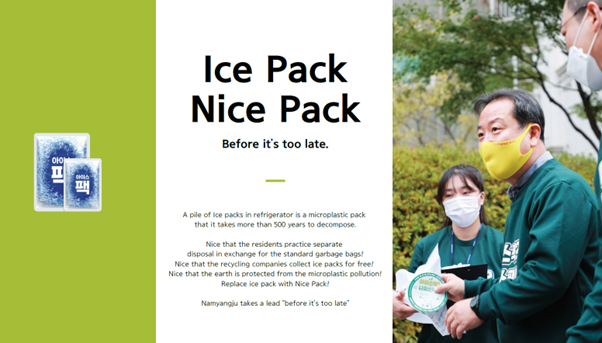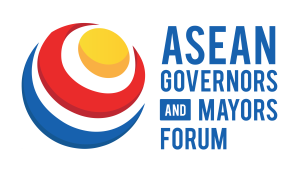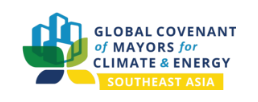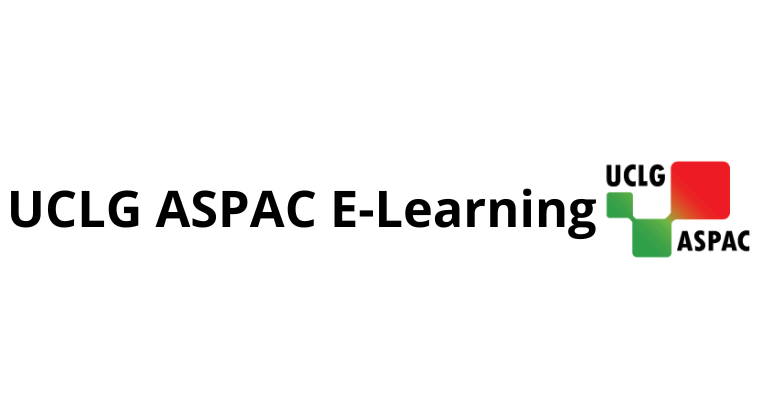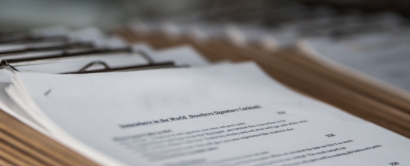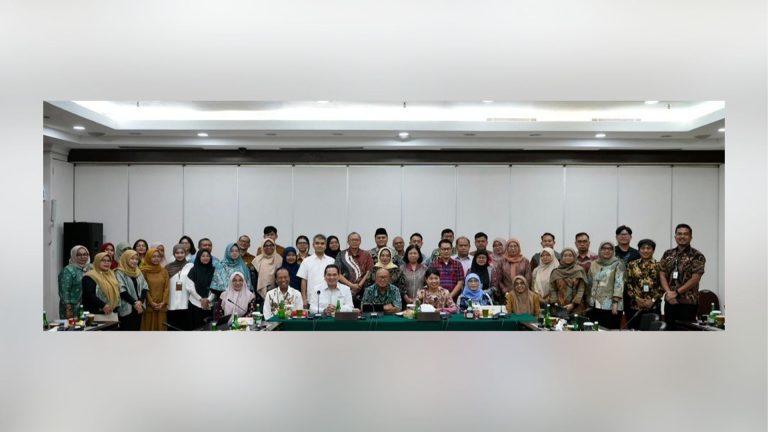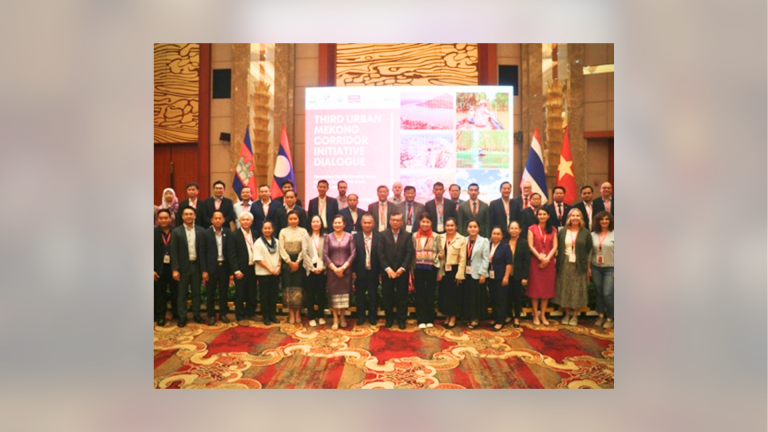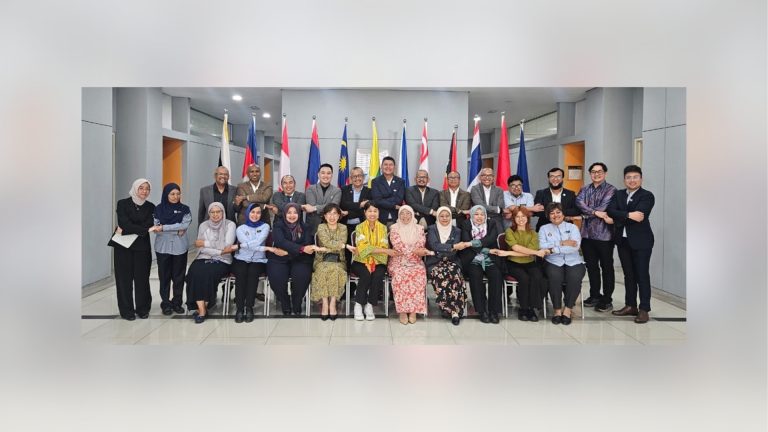Namyangju City is located in the Northeast Gyeonggi-do, the Republic of Korea (about 18 km northeast of Seoul). Its area is approximately 3/4 of Seoul and home to 730,000 residents.
For Namyangju, environment has a lot to do with the city’s future survival. It is reflected on one of the city’s core-values: “environmental innovation.” Namyangju City emphasises that “The garbage issue is all about our survival. We need to raise awareness about the environment as a consumer. While the government can lead innovation in transportation and space, the success of environmental innovation cannot be achieved without citizens’ interest and participation.”
Putting the value into practice, Namyangju City has implemented projects to encourage citizens to take part on solving environmental issues and come together to identify and act on related policies before it is too late.
One of the projects is called the ice pack collection. This initiative is a response to the dramatic increase of ice packs uses to maintain the freshness of delivered foods because of the increasing number of online shopping and delivery service due to the prolonged COVID-19 pandemic. The microplastics inside the ice packs are the main culprit of environmental pollution and take 500 years to degrade naturally. There are ice packs made of only water in South Korea; however, most of them are produced with super absorbent polymers, which is also a serious matter. The Namyangju City’s ice pack collection project has collected the used products and recycled them.
Namyangju City has engaged more citizens through an incentive programme. Citizens can exchange used ice packs for garbage bags and money gift cards. This practice has received positive feedbacks from local people as many citizens in Namyangju call it, “a nice pack,” instead of “an ice pack,” because it is an environmentally friendly policy that benefits everyone. Since the start of this project in September 2020, more than 120,000 citizens have participated. The city has collected around 2,086 tons of ice packs in approximately one and a half year.
The system unites citizens in a common cause. South Korea’s first ice pack reproduction automation facilities have been developed and operated. When ice packs are inserted in reproduction automation facilities, they are washed, dried, and separated for packing, and eventually repackaged with filler materials previously separated. To date, more than 270 tons of ice packs have been reproduced and 223 tons of ice packs have been washed, selected, and redistributed.

With this initiative, Namyangju City has become the centre of the ice pack collection movement as the practice spreads across the country. It is an environmentally friendly policy initiated by local government and becomes role model for other local governments.
Mayor Kwang han-Cho of Namyangju said, “it took a long time to find the perfect way to recycle ice packs. The city will take the lead in addressing other environmental issues by creating policies where citizens can easily participate and take interest in.” Also, the city is at the forefront of implementing “environmental innovation” policies by proposing plans to promote cooperation in recycling ice packs to the Ministry of Environment and National Association of Mayors.
